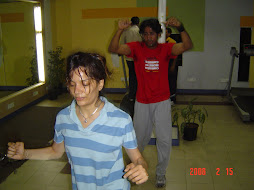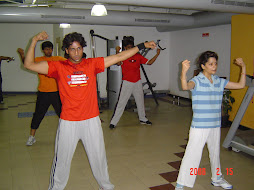Pilates
is a fantastic exercise regime for toning muscles strengthening your core.
Doing
a Pilates workout is a great way to build strength, and cardiovascular training
is the best way to lose weight by burning calories. A Pilates workout helps
with imbalances in the body but when combined with a cardiovascular exercise
program, such as running and aerobic workouts, it can have numerous benefits.
They keep your heart healthy and your circulatory system in good shape while
burning calories to keep your figure looking fit and trim.
Centering: Focus is brought to the centre of the body where all Pilates movements originate. The energy for the exercises are sourced from the centre or what we now refer to as the core. It builds great abdominal strength, allowing the rest of the body to move much more effectively and efficiently. Once the core muscles are engaged, this assists in stability of the pelvis and spine and reduces risk of injury whilst exercising.
Control: Pilates exercises are performed with the utmost control, which minimises risk of injury and produces effective results. Unlike many exercise regimes, which advocate multiple repetitions, Pilates emphasises quality of movement over quantity. Every instruction to each individual body part is carefully controlled and collectively contributes to the overall success of the whole movement. Attention to detail is crucial in achieving perfect control.
Precision: Similar to control but focusing on alignment and spatial awareness. There are precise instructions for correct placement and positioning of the body within each exercise to assist in proper alignment and good posture. Every exercise has definitive points where the body should be positioned at all times. With good training, precision can be increased resulting in improved posture and good overall movement. Control and precision eventually becomes ingrained, having the effect of good movement patterns in our daily lives as well.
Concentration: It is important to establish a connection between body and mind to gain optimal value from each exercise. By bringing our attention to each movement, we increase body awareness and conscious control. A good tip is to close the eyes when performing the exercises. With the eyes shut, the visual stimulus from around the room is taken away. The brain is then free to home in on the internal environment and becomes more receptive to different sensations within the body and awareness and feeling are enhanced.
Flow: Pilates exercises should be performed with grace and ease, which assists in flowing movements. A smooth, continuous rhythm with appropriate transitions makes for the harmonious flow of a Pilates workout. Movements are not held static; rather the repetitions aim to create continuous motion with an even flow. The intention is for the exercises to flow into each other thereby increasing stamina. A competent flowing class can look as elegant as a choreographed dance routine.
Breathing: Every movement in Pilates has a specific breath pattern. Together with the timing of the breath, it enhances effective muscle use. Generally speaking we tend to exhale on the exertion or effort exertion part of the movement and this also helps prevent the body from tensing. Effective breathing can help to lengthen the abdomen, broaden the upper back and helps train the correct muscle recruitment for everyday core strength.
Proper breathing assists in flowing movements, allowing the blood to be enriched with oxygen, which nourishes all the cells in our body whilst expelling stale air. More oxygen in the muscles helps them to relax and therefore reduces tension. It also assists in concentration and control whilst exercising.
Benefits of Pilates
Pilates exercises combine strengthening with
relaxation; they lighten the load on your spine and joints by correcting
muscular imbalances due to bad posture or misuse of muscles and alleviate
tension.










No comments:
Post a Comment